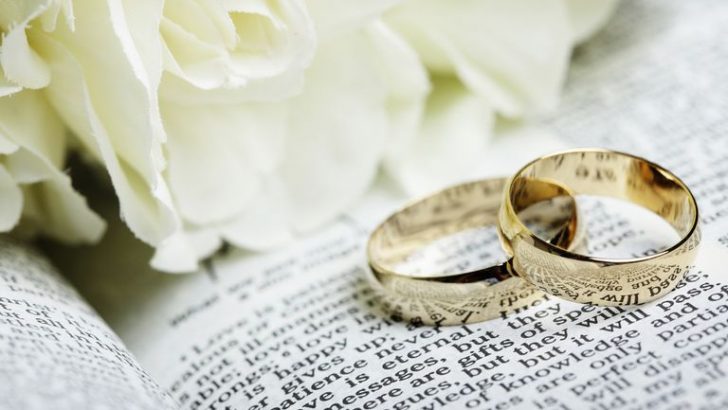While Catholic marriage ceremonies are still the most popular in Ireland there has been dramatic decline, according to the Central Statistics Office (CSO).
The figures also reveal Irish grooms are now the oldest on record. The CSO data for last year shows that on average men are now aged 36.4 when they tie the knot. For brides the average is 34.4.
Couples opting for Catholic sacramental marriage are still in the majority at 49.2% – 10,027 couples. This has fallen by almost 3,000 in the last five years.
This reveals a drop from 52.8% in 2017. The percentage drop in sacramental marriage from 2016 to 2017 was a much smaller 0.9%.
Secular
David Quinn of the Iona Institute said one of the reasons there is a continuous decline in Catholic marriage is that Ireland is “obviously getting more secular”.
“Also if you look up the tables properly you’ll see a lot of people are entering into second marriages. They have to get married somewhere else other than the Catholic Church, so it’s obviously going to deflate the figures as a total figure.”
He added that one of the “single biggest factors” is that hotels didn’t use to facilitate wedding ceremony. “So nowadays you can have the reception and the ceremony in the same place and a lot of people are opting for that because it’s nice and convenient.
“So those people obviously aren’t motivated enough by their religion to get married in a Church but it doesn’t mean they’re anti either.”
Speaking about the increasingly and now record age of Irish grooms Mr Quinn said: “They often want to wait until they can afford a house and that’s taking longer and longer. They often have a really expensive wedding, so that means saving and saving.
Individualism
“And also, the biggest factor is, they see their 20s and into their early 30s as the time to be free and not settle down. That’s a whole symptom of individualism in society.
The consequences are a lot of them end up not being able to have kids because your biological clock is running down and so infertility keeps on going up.”
The report, published on April 10, was based on data compiled from the marriage registration forms of all marriages registered in Ireland in 2018.
Marriages not recognised by the Church are on the rise, with the number of Humanist and Spirituality Union of Ireland ceremonies increasing.
A Humanist ceremony was the choice of 1,766 opposite-sex couples and 121 same-sex couples last year. Overall 1,341 opposite-sex couples and 89 same-sex couples opted for a Spiritualist Union of Ireland ceremony.
Civil marriage ceremonies accounted for almost two-thirds (62.8%) of same-sex marriages, while over a quarter (28.7%) of opposite-sex couples chose a civil marriage ceremony.
Most popular
CSO statistician Carol Anne Hennessy said: “Unsurprisingly, the warmer months of June, July and August were the most popular for weddings, while the cooler months of January and February were the least popular.”
“Friday and Saturday continue to be the most popular days to ‘tie the knot’ for opposite-sex couples, while Friday was the most favoured day to wed for same-sex couples.
“Sundays and Mondays remain the least popular days of the week to marry for all couples.”
In 1980 there was 6.4 marriages per 1,000 people, this fell to 4.5 in 2013 (at a time when 4.1 was the average for the EU). This further dropped to 4.3 in 2018.
Last year 87.2% (17,789) of opposite-sex marriages were the first marriage for both the groom and bride. The breakdown between grooms and brides was 18,581 (91.1%) grooms and 18,881 (92.6%) brides marrying for the first time.


 Chai Brady
Chai Brady
